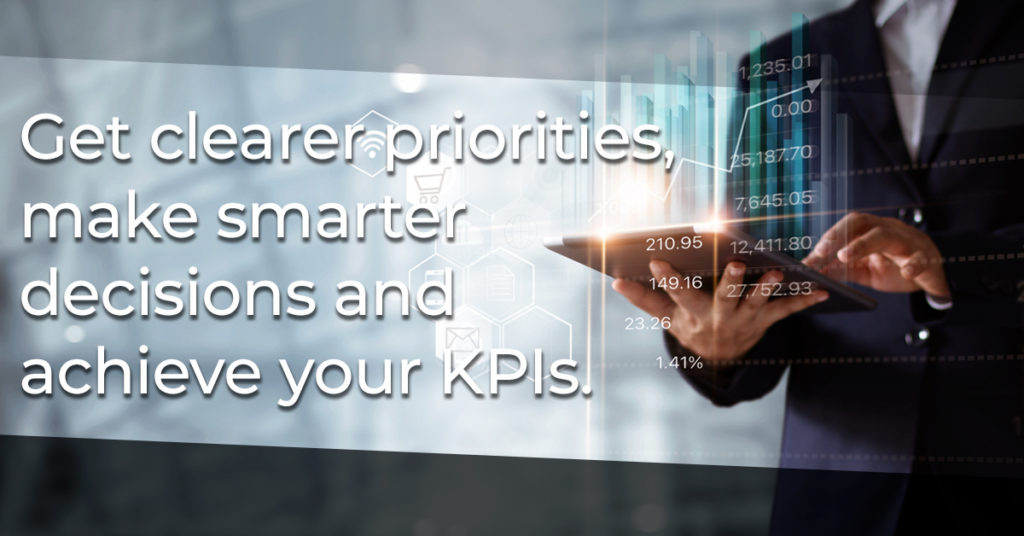By Damani Short & Cynthia Short

How Technology Investments Impact Business
As the technology function evolves to be a strategic partner with the business functions, technology leaders need to address how technology spending impacts business capabilities. Unfortunately, traditional financial modeling doesn’t allow for understanding the impact of technology transformation initiatives on business capabilities. To remedy this, organizations can take a different approach to modeling to make more informed decisions. The end result is clearer prioritization, smarter decision making and achievement of key performance indicators (KPIs).
Traditional Modeling Limits the View
Most financial systems are structured in a way that limits the ability to analyze, understand and report progress, and to effectively communicate and manage technology spend. Additionally, current financial models are structured by categories in a financial system such as travel, labor software, etc., and provide little insight into the analysis of whether allocations are aligned with business goals and outcomes.
As a result, there is little-to-no view into the impact of technology spending, which makes it difficult to report progress year-over-year. Discretionary versus non-discretionary spending and budget implications are challenging to communicate, making it difficult to demonstrate the value of the technology investment. As a result, bad investments are made and investments that should be made are not.
A Different Approach: Capabilities-Based Framework
Instead of defaulting to the traditional budgeting process, technology leaders need to ask themselves how to develop a capability-based framework that becomes the new lexicon for driving technology investment strategy. This also includes the multi-year roadmap to get there and any corresponding investments and cuts.
What is a Business Capabilities-Based Approach?
Business capabilities define what an organization can do, independently of how or why, in order to achieve outcomes that are part of corporate strategy. They provide a view into the business that is free of details such as processes and organization structure, and are key building blocks of the business, unique and independent from each other, that tend to be stable over time.
How Does Capabilities-Based Framework Work?
In turn, a business capability map is used to model what a business does to reach its objectives (i.e., its capabilities), instead of how it achieves just IT objectives. The map visualizes enterprise capabilities in a particular state; for example, current capabilities and their current maturity level, or required capabilities in a future state.
Your new business capability-centered framework for assessing and analyzing technology spend should tell a broader technology and financial story that is understandable and repeatable to your stakeholders. It should also allow the ability to benchmark for analysis and reporting.
There are three critical phases in this different financial modeling approach to technology.
- Defining – Taking a deeper look at and mapping capabilities, detailing spend analysis, documenting allocation, and identifying key industry benchmarks.
- Analyzing – Socializing capabilities for consensus, allocating spend, determining reporting priorities, and creating a model to align with the established benchmarks.
- Strategic Reallocation – Determining discretionary vs. non-discretionary investments, identifying spend changes, identifying and solving for major gaps, and refining the operationalization plan.
Benefits of a Business Capabilities-Based Approach
A common lexicon is developed that focuses on business capabilities, not just budgets. Including a visual that serves all audiences – from Board members to individual contributors – provides a backdrop for not only finances but also strategies. In addition to establishing measurement criteria, you’re building a communication foundation that speaks in business terms rather than purely IT-speak to tell the whole technology story.
Assessing spend relative to capabilities helps create alignment with business priorities and map out the future state. A framework is established for budgeting along with trend analysis and benchmark reporting. The capability view of the technology spend allows leaders to assess things such as dollar amounts going to core vs non-core capabilities, the ability to prioritize (high, medium and low) those capabilities, and ultimately determine which capabilities to optimize for cost versus invest to build. As a result, leadership is able to track investment that is directed towards capabilities that are the most important to the business, and the impact that is being realized from that investment.
The path ahead is determined with new context that allows for immediate gap solutioning. The framework is set for strategy development in any number of areas including the organization itself, partnerships, disruptive technology, and analytics, etc. Insights for decision making are also gained along with the ability to drive or enable business capabilities. The end result: an informed development of a roadmap that serves as a multi-year investment strategy based on developing capabilities.
Wrap Up
Traditional financial modeling has long been the go-to method for allocating technology spend, but it falls short in providing a true picture of how technology investments impact the business and how well they may or may not align with strategy.Taking a different financial approach by building a business capability-centered framework for assessing and analyzing technology spend will help maximize that investment and advance the KPIs of the business. Learn how Lexico’s consulting services can help implement this framework for your organization.
If you’re looking for a different approach to financial modeling that gets the most out of your technology investment, contact Lexico.
